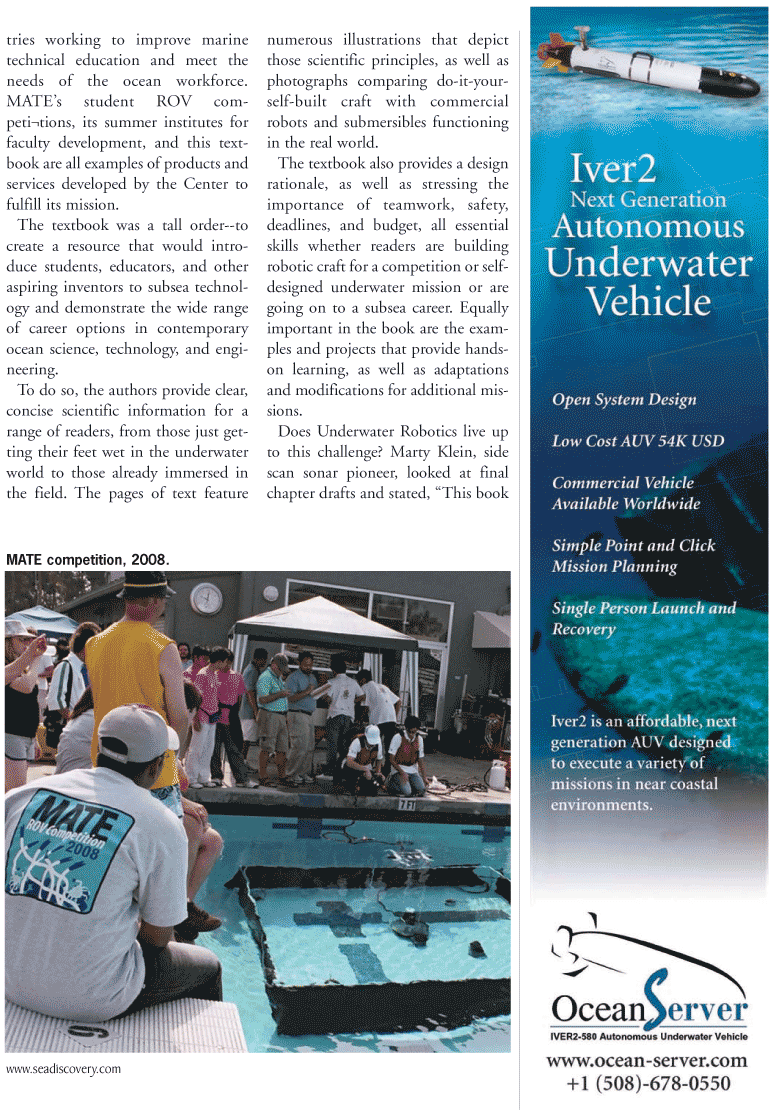
Page 17: of Marine Technology Magazine (November 2010)
Fresh Water Monitoring and Sensors(lakes, rivers, reservoirs)
Read this page in Pdf, Flash or Html5 edition of November 2010 Marine Technology Magazine
www.seadiscovery.com tries working to improve marine technical education and meet the needs of the ocean workforce.
MATE’s student ROV com- peti¬tions, its summer institutes for faculty development, and this text- book are all examples of products and services developed by the Center to fulfill its mission.
The textbook was a tall order--to create a resource that would intro- duce students, educators, and other aspiring inventors to subsea technol- ogy and demonstrate the wide range of career options in contemporary ocean science, technology, and engi- neering.
To do so, the authors provide clear, concise scientific information for a range of readers, from those just get- ting their feet wet in the underwater world to those already immersed in the field. The pages of text feature numerous illustrations that depict those scientific principles, as well as photographs comparing do-it-your- self-built craft with commercial robots and submersibles functioning in the real world.
The textbook also provides a design rationale, as well as stressing the importance of teamwork, safety, deadlines, and budget, all essential skills whether readers are building robotic craft for a competition or self- designed underwater mission or are going on to a subsea career. Equally important in the book are the exam- ples and projects that provide hands- on learning, as well as adaptations and modifications for additional mis- sions.
Does Underwater Robotics live up to this challenge? Marty Klein, side scan sonar pioneer, looked at final chapter drafts and stated, “This book
MATE competition, 2008.

 16
16

 18
18
